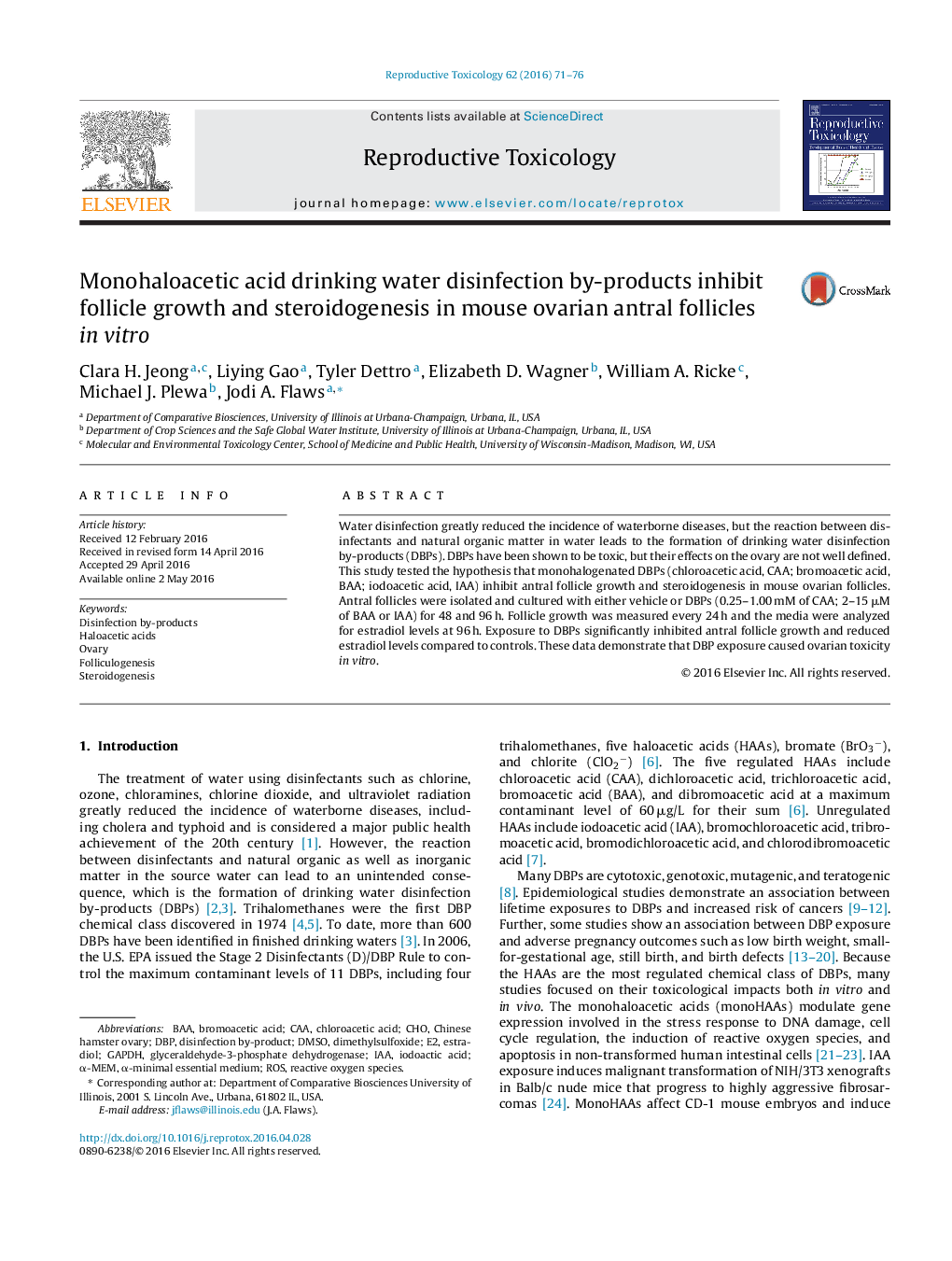| Article ID | Journal | Published Year | Pages | File Type |
|---|---|---|---|---|
| 5858023 | Reproductive Toxicology | 2016 | 6 Pages |
Abstract
Water disinfection greatly reduced the incidence of waterborne diseases, but the reaction between disinfectants and natural organic matter in water leads to the formation of drinking water disinfection by-products (DBPs). DBPs have been shown to be toxic, but their effects on the ovary are not well defined. This study tested the hypothesis that monohalogenated DBPs (chloroacetic acid, CAA; bromoacetic acid, BAA; iodoacetic acid, IAA) inhibit antral follicle growth and steroidogenesis in mouse ovarian follicles. Antral follicles were isolated and cultured with either vehicle or DBPs (0.25-1.00 mM of CAA; 2-15 μM of BAA or IAA) for 48 and 96 h. Follicle growth was measured every 24 h and the media were analyzed for estradiol levels at 96 h. Exposure to DBPs significantly inhibited antral follicle growth and reduced estradiol levels compared to controls. These data demonstrate that DBP exposure caused ovarian toxicity in vitro.
Keywords
IAACAADBPBAAGAPDHα-MEMDMSOROSα-Minimal essential mediumEstradiolSteroidogenesisBromoacetic acidchloroacetic acidHaloacetic acidsChoOvaryChinese Hamster OvaryDimethylsulfoxideDisinfection by-productDisinfection by-productsfolliculogenesisglyceraldehyde-3-phosphate dehydrogenaseReactive oxygen species
Related Topics
Life Sciences
Environmental Science
Health, Toxicology and Mutagenesis
Authors
Clara H. Jeong, Liying Gao, Tyler Dettro, Elizabeth D. Wagner, William A. Ricke, Michael J. Plewa, Jodi A. Flaws,
